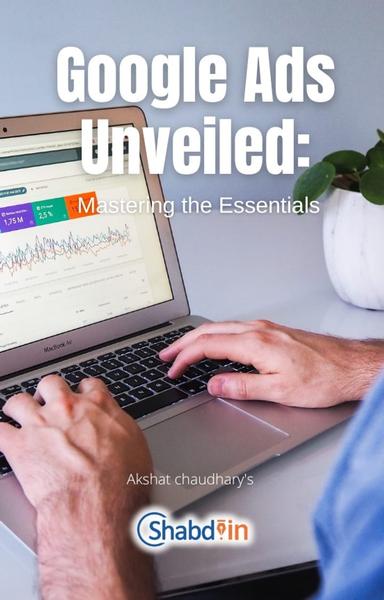In the world of online advertising, Google AdWords stands as a powerful tool that can help you connect with your target audience, drive traffic to your website, and ultimately, boost your business's success. In this chapter, we will delve into the nitty-gritty details of setting up your first AdWords campaign. By the end of this chapter, you will be well on your way to creating a compelling ad campaign that delivers results.

Understanding the Basics:
Before we dive into the practical aspects, it's crucial to grasp the fundamental elements of an AdWords campaign:
Campaigns: These are your high-level advertising objectives. You can have multiple campaigns, each with its own budget and targeting parameters.
Ad Groups: Under each campaign, you'll have ad groups. Ad groups contain a set of closely related keywords and ads. This organizational structure ensures that your ads are relevant to the keywords you're targeting.
Keywords: Keywords are the terms and phrases potential customers might use to find your products or services. Proper keyword research is key to success.
Ad Copy: This is the text that appears in your ads. It should be engaging, concise, and relevant to your target audience.
Bidding: This is how much you're willing to pay for each click on your ad. Effective bidding strategies are essential for budget management.
Now, let's get into the step-by-step process of setting up your campaign:
1. Sign into Your Google Ads Account:
If you don't have a Google Ads account yet, you'll need to create one. Once you're logged in, click on "Campaigns" to begin the setup process.
2. Choose Your Campaign Type:
Google Ads offers several campaign types, such as Search, Display, Video, and Shopping. For beginners, the "Search" campaign type is often the best starting point. It allows you to display text ads in Google's search results.
3. Set Campaign Goals:
Before proceeding, define your campaign goals. Are you looking to drive website traffic, generate leads, or increase sales? Your goals will influence your campaign strategy.
4. Configure Campaign Settings:
Here, you'll specify your campaign settings:
Campaign Name: Choose a clear and descriptive name.
Networks: Select where you want your ads to appear. Google Search Network and Google Search Partners are common choices.
Location and Language: Define the geographic area where your ads should be displayed and the language of your target audience.
Budget and Bidding: Set your daily budget and bidding strategy. Start with a conservative budget until you understand how your campaign performs.
5. Create Your Ad Group:
Within your campaign, create your first ad group. Give it a relevant name and select your initial set of keywords. Make sure these keywords are closely related to the products or services you're advertising.
6. Craft Your Ad Copy:
Write compelling ad copy that speaks directly to your target audience. Highlight unique selling points, include a clear call-to-action (CTA), and use relevant keywords in your ads.
7. Set Up Keyword Match Types:
Google Ads offers different keyword match types: broad match, phrase match, exact match, and broad match modifier. Understanding these match types and selecting the appropriate ones for your keywords is crucial for targeting the right audience.
8. Define Your Bid Strategy:
Choose a bidding strategy that aligns with your campaign objectives. Options include manual bidding, automated bidding, and enhanced cost-per-click (ECPC). Start with manual bidding to maintain control over your spending.
9. Review and Launch:
Before launching your campaign, review all your settings, ad copy, and keywords. Make any necessary adjustments to ensure everything is in order.
10. Monitor and Optimize:
Once your campaign is live, the work doesn't end. Regularly monitor your campaign's performance, analyze data, and make adjustments. This iterative process is essential for improving your ad's effectiveness over time.
Setting up your first AdWords campaign may seem daunting, but with careful planning and attention to detail, you can create a campaign that drives results. Remember that success in online advertising often requires continuous learning and optimization. In the next chapters of this book, we will explore advanced strategies to take your Google AdWords expertise to the next level.










